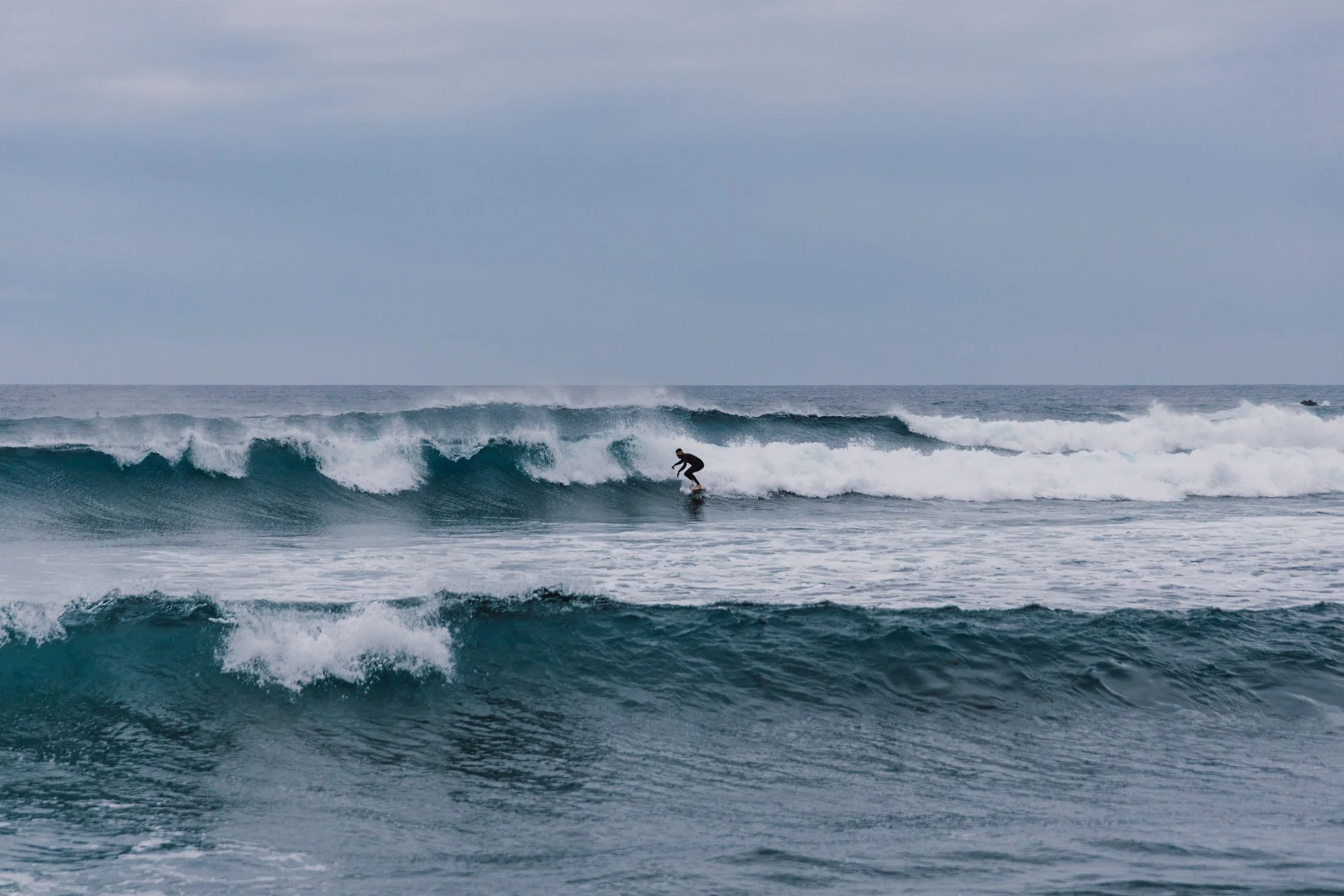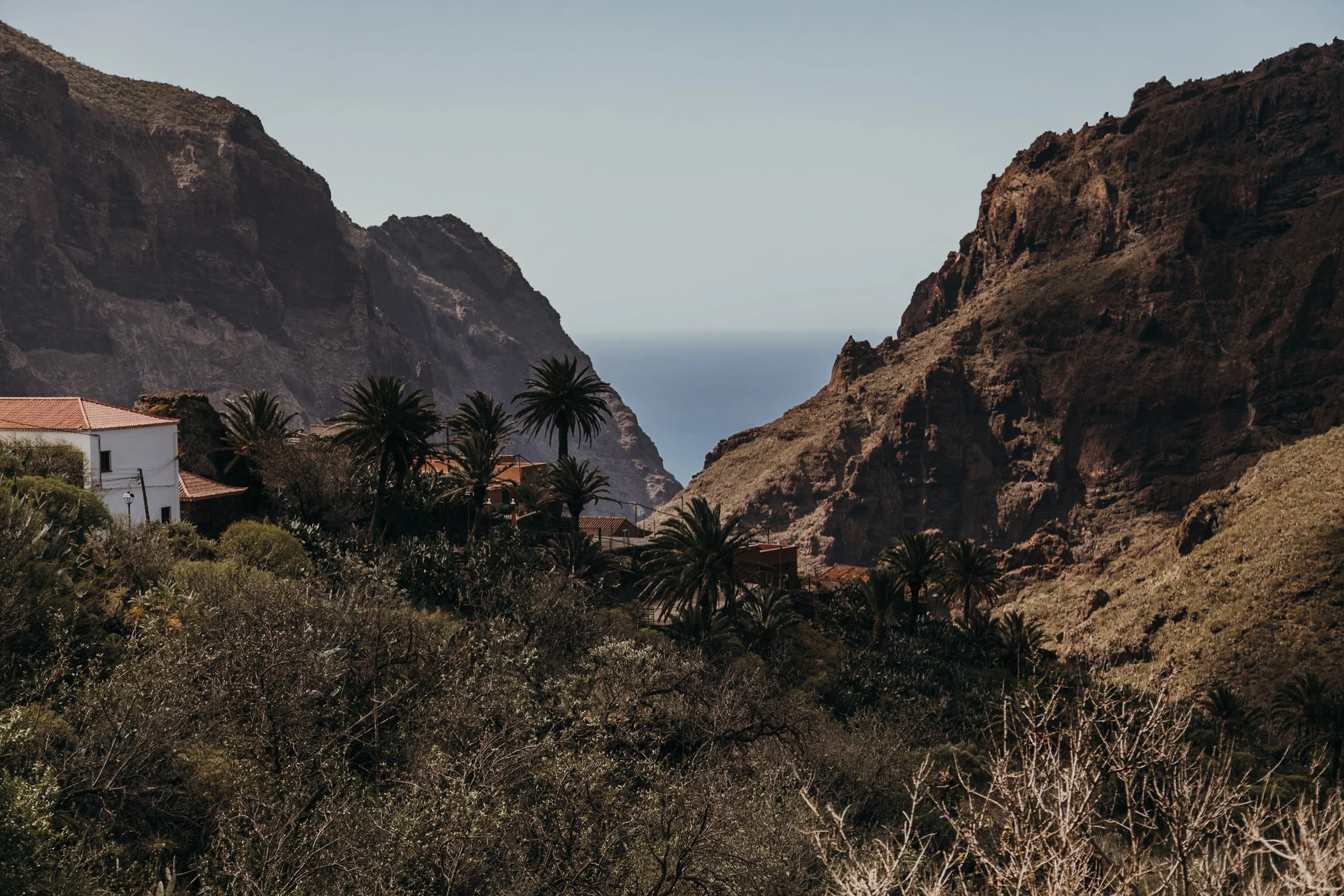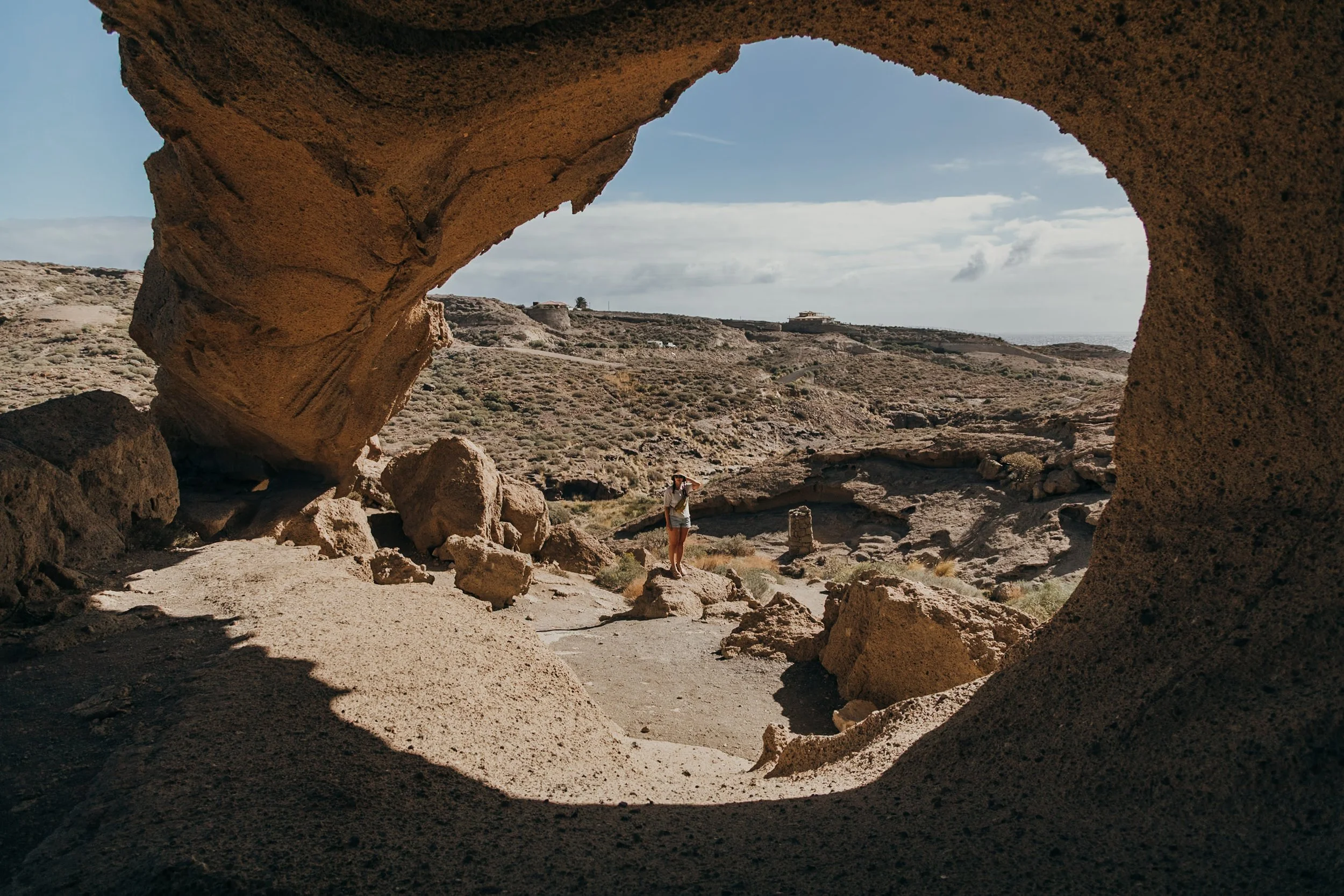This post may contain affiliate links, which means if you purchase through these links, we may receive a small commission at no cost to you. Thank you for supporting our website.
The Canary Islands are one of the most reliable destinations in Europe for year round sunshine and warm temperatures. Know as the "islands of eternal Spring" with a subtropical climate, sheltered beaches and dramatic volcanic scenery, the islands enjoy stable weather throughout the seasons, making them an ideal escape at any time of year.
This guide explains the best time to visit the Canary Islands based on weather, temperatures, crowds, rainfall, sea conditions and budget. It also includes a detailed month by month breakdown so you can decide which time of year suits your trip.
Whether you want peak sunshine for lazy beach days, the cheapest travel window for low cost flights and quieter resorts, or the warmest seas for swimming, this guide gives a clear overview of what to expect across Tenerife, Lanzarote, Gran Canaria and Fuerteventura.
How to Use This Guide
Use the contents table above to jump straight to the section you are most interested in. This guide breaks down the Canary Islands weather and seasons month by month, helping you decide the best time to visit based on sunshine levels, temperatures, crowds, prices and activities across Tenerife, Gran Canaria, Lanzarote and Fuerteventura.
Whether you are searching for warm winter sun, calm conditions for hiking, ideal weather for beach holidays or quieter shoulder months with great hotel deals, this guide will help you choose the perfect time of year to plan your Canary Islands trip.
Best Time to Visit the Canary Islands
The best time to visit the Canary Islands depends on the type of trip you want. You might be seeking a hot summer holiday, or, like many tourists from mainland Spain, escaping the peak summer temperatures. Alternatively, you may be looking to warm up during the dark, cold UK winters and enjoy some winter sun. The Canary Islands offer incredible variety, from consistently pleasant weather to a wide range of activities for every type of traveller.
The best time to visit the Canary Islands is from March to October, when the islands are warm, sunny and perfect for beach holidays, hiking routes and water activities. Sea temperatures are at their highest, rainfall is minimal and the days are long.
For travellers who want mild winter sunshine, November to February are excellent months. Even in mid winter, the islands remain far warmer than mainland Europe, which is why they are one of the most popular winter sun destinations for UK travellers.
Cheapest Time to Visit the Canary Islands
The shoulder seasons offer the best value for budget friendly trips. Winter months like November, January and February often have the lowest prices, provided you avoid Christmas and New Year. Spring months such as March, April and May are also excellent for savings, although Easter week is busier. October is another affordable month with warm seas and comfortable temperatures. Flights and hotels are typically at their lowest during these periods, while still offering great weather for beaches and outdoor adventures.
Canary Islands Weather Overview
All eight islands enjoy warm, pleasant weather throughout the year. The climate is influenced by the trade winds and the nearby Atlantic Ocean, keeping temperatures stable. Tenerife and Gran Canaria tend to offer the warmest weather especially in the winter months. Lanzarote and Fuerteventura, which are windier and ideal for water sports.
Average Temperatures in the Canary Islands
The average temperatures across the Canary Islands stay relatively stable throughout the year, although winter can bring a few overcast days and the occasional rainy spell.
Month by Month Guide to the Canary Islands
Each month in the Canary Islands has its own character. The weather shifts subtly through the seasons, creating different experiences depending on when you visit. Below is a month by month breakdown of conditions, what to expect and the best reasons to travel during each period.
January – Mild, Sunny and Relaxed
January is one of the best winter sun months in the Canary Islands. Expect warm days, bright sunshine and cool evenings. Rainfall is low and beaches are peaceful, which makes it a great time for hiking, wellness breaks and quiet coastal escapes.
Weather: 19–21°C daytime, 14°C nights, low rainfall
Crowds: Low after New Year
Good For: Winter sun, hiking, quiet breaks, budget travel
February – Pleasant Weather and Good Winter Sun
February offers comfortable temperatures and plenty of sunshine. Seas are cooler but still suitable for swimming. Resorts are calm apart from the UK half term period, which brings slightly higher prices for the school holidays.
Weather: 19–21°C daytime, 14°C nights, low rainfall
Crowds: Low to moderate
Good For: Sunshine, walking, affordable winter holidays
March – Warm, Bright and Ideal for Outdoor Activities
March feels like early summer. Days are warmer, rain is rare and landscapes are green from the winter season. It is an excellent month for hiking, beach days and exploring volcanic scenery. Prices remain good before Easter.
Weather: 20–22°C daytime, 15°C nights, very low rainfall
Crowds: Moderate
Good For: Hiking, road trips, warm sunshine
April – Reliable Sun and Great Beach Weather
April delivers stable sunshine, warm temperatures and comfortable seas. It is a popular month for families, especially around Easter. Beaches are lively but not too crowded and the islands look vibrant and colourful.
Weather: 21–23°C daytime, 15°C nights, very low rainfall
Crowds: Moderate to high at Easter
Good For: Families, couples, beach holidays
May – Warm, Dry and Excellent Value
May is one of the best months to visit. Days are warm, humidity is low and the sea is pleasant for swimming. It is perfect for outdoor activities such as hiking, diving and exploring. Prices remain low before summer.
Weather: 22–24°C daytime, 17°C nights, almost no rainfall
Crowds: Low to moderate
Good For: Value travel, outdoor adventures, beaches
June – Hot, Sunny and Perfect for Long Days Outside
June brings long, bright days and consistent sunshine. It is hot without being overwhelming and the sea is warm. Resorts start to fill up later in the month, but early June still offers excellent prices.
Weather: 24–26°C daytime, 18°C nights, almost no rainfall
Crowds: Moderate
Good For: Beaches, swimming, exploring, photography
July – Peak Summer Heat
July is hot, dry and perfect for classic summer beach holidays. Winds in Fuerteventura make it ideal for surfing and kiteboarding. Resorts become busier as school holidays begin.
Weather: 26–28°C daytime, 20°C nights, no rainfall
Crowds: High
Good For: Families, water sports, guaranteed sunshine
August – Hottest Month of the Year
August delivers the highest temperatures and the warmest sea conditions. Beaches are busy, the atmosphere is lively and evenings are warm. This is peak season so expect higher prices.
Weather: 27–29°C daytime, 21°C nights, very low rainfall
Crowds: Very high
Good For: Beach holidays, nightlife, swimming
September – Warm, Calm and One of the Best Months
September is one of the best months to visit the Canary Islands. The sea is very warm, days are hot but comfortable and crowds thin out as schools return.
Weather: 26–28°C daytime, 21°C nights, low rainfall
Crowds: Moderate
Good For: Couples, swimming, relaxed beach trips
October – Warm Days and a Relaxed Autumn Atmosphere
October offers summer like warmth with pleasant evenings and comfortable seas. Occasional showers appear late in the month, but the weather is still reliable.
Weather: 24–26°C daytime, 19°C nights, light rainfall
Crowds: Moderate
Good For: Autumn sun, walking, scenic drives
November – Excellent for Winter Sun
November is warm enough for the beach, especially in the south of Tenerife and Gran Canaria. The sea stays above 20 degrees and prices are lower than the peak season.
Weather: 22–24°C daytime, 17°C nights, moderate rainfall
Crowds: Low to moderate
Good For: Budget friendly winter sun, hiking, calm coastal breaks
December – Mild, Sunny and Popular at Christmas
December brings warm days, bright sunshine and mild evenings. Early December is quiet and great value. Christmas and New Year are busier with higher prices and a festive atmosphere in the resorts.
Weather: 20–22°C daytime, 15°C nights, moderate rainfall
Crowds: Low early month, high at Christmas
Good For: Winter holidays, families, guaranteed mild weather
Best Island to Visit by Season
With eight islands to choose from, there is something for every type of traveller. Each island offers a unique experience at different times of the year, from warm winter beaches to quiet summer escapes. Some of our personal favourites are Lanzarote, La Graciosa and the north of Tenerife, each offering its own charm and ideal conditions throughout the seasons.
Tenerife
Tenerife is perfect for year round travel, offering a mix of beaches, mountains and family-friendly resorts. The south of the island is the warmest and sunniest, while the north is greener and slightly cooler. Ideal for hiking, water sports and cultural exploration.
Gran Canaria
Gran Canaria is great from November to March for winter sun, particularly on the southern beaches. The island offers varied landscapes, from dunes to mountains, and a lively mix of towns and resorts. Perfect for families and couples seeking mild winter temperatures.
Lanzarote
Lanzarote shines from April to October when the weather is warm and dry. Its volcanic landscapes, unique architecture and beaches make it ideal for outdoor adventures and exploring national parks.
Fuerteventura
Fuerteventura is best from May to September, when temperatures are high and conditions are perfect for water sports. Long sandy beaches and strong winds attract surfers, kiteboarders and sun-seekers alike.
La Palma
Known as “La Isla Bonita,” La Palma is green and lush, ideal for hiking and nature lovers. Best visited from April to October for dry, sunny weather, although winter months can still offer mild temperatures for exploring forests and volcanoes.
La Gomera
La Gomera is a tranquil island with stunning cliffs and hiking trails through Garajonay National Park. The best time to visit is spring and early autumn, from March to June and September to October, when the weather is mild and the island is quiet.
El Hierro
El Hierro is the second smallest and least touristy island, perfect for diving, hiking and peaceful escapes. Best visited from April to September for warm, dry weather and calm seas.
La Graciosa
La Graciosa is a tiny, off-the-beaten-path island with beautiful beaches and minimal crowds. Ideal from May to September, when temperatures are warm, the sea is inviting, and the island is at its quietest for a relaxing getaway.
Where to Stay on the Canary Islands
The Canary Islands offer a huge variety of places to stay, from private villas and boutique hotels to luxurious all inclusive five star resorts. We have listed some of our favourite options below to help you find the perfect base for your trip.
Tenerife | Iberostar Selection Sábila - Adults Only
Gran Canaria | Lopesan Baobab Resort
Fuerteventura | Iberostar Selection Fuerteventura Palace
La Gomera | Bancal Hotel & Spa
Looking for something else? The use our interactive map below to find your perfect stay.
Plan your trip with our guides
7 reasons why La Graciosa Lanzarote should be your next destination
A hidden treasure of Lanzarote | A guide to La Graciosa
The best things to see and do in Lanzarote, Spain
Fuerteventura Travel Guide | The Best Things to Do Including Map
Discover the Wild Beauty of Tenerife | 4 Days in Tenerife
7 Things to Know Before Visiting the Canary Islands in November
Tenerife in December | The Ultimate Winter Sun Guide
Tenerife in January | Weather, Best Places to Stay and Top Things To Do








